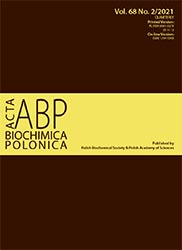Sequence variation analysis of the E1 and E2 genes of human papillomavirus type 16 in cervical lesions in women from the south of Poland
Abstract
The E1 and E2 genes of the human papillomavirus encode the so-called early proteins, their sequences are conserved, and regulatory functions are associated with the viral oncoproteins. The purpose of this study is to determine the HPV16 E1 and E2 mutations appearing in the female population of southern Poland, depending on the severity of cervical pathological changes. We also take into account the number of E1 and E2 mutations detected in the E6 gene variant (350G or 350T). This publication is one of the first in the Central and Eastern Europe to deal with this topic. We identified 4 mutations in the E1 gene and 24 mutations in the E2 gene that have not been described so far. In three cases of squamous cell carcinoma a C3409T mutation occurred, which is widely described as oncogenic. This mutation lies in the 3243-3539 area of the E2 hinge region. Statistical analyses show a possible relationship of mutations in this area with oncogenesis. The discovered dependencies may be important in the context of oncogenesis, however, a study with a larger group of patients is needed in order to confirm this view.
Acta Biochimica Polonica is an OpenAccess quarterly and publishes four issues a year. All contents are distributed under the Creative Commons Attribution-ShareAlike 4.0 International (CC BY 4.0) license. Everybody may use the content following terms: Attribution — You must give appropriate credit, provide a link to the license, and indicate if changes were made. You may do so in any reasonable manner, but not in any way that suggests the licensor endorses you or your use.
Copyright for all published papers © stays with the authors.
Copyright for the journal: © Polish Biochemical Society.


